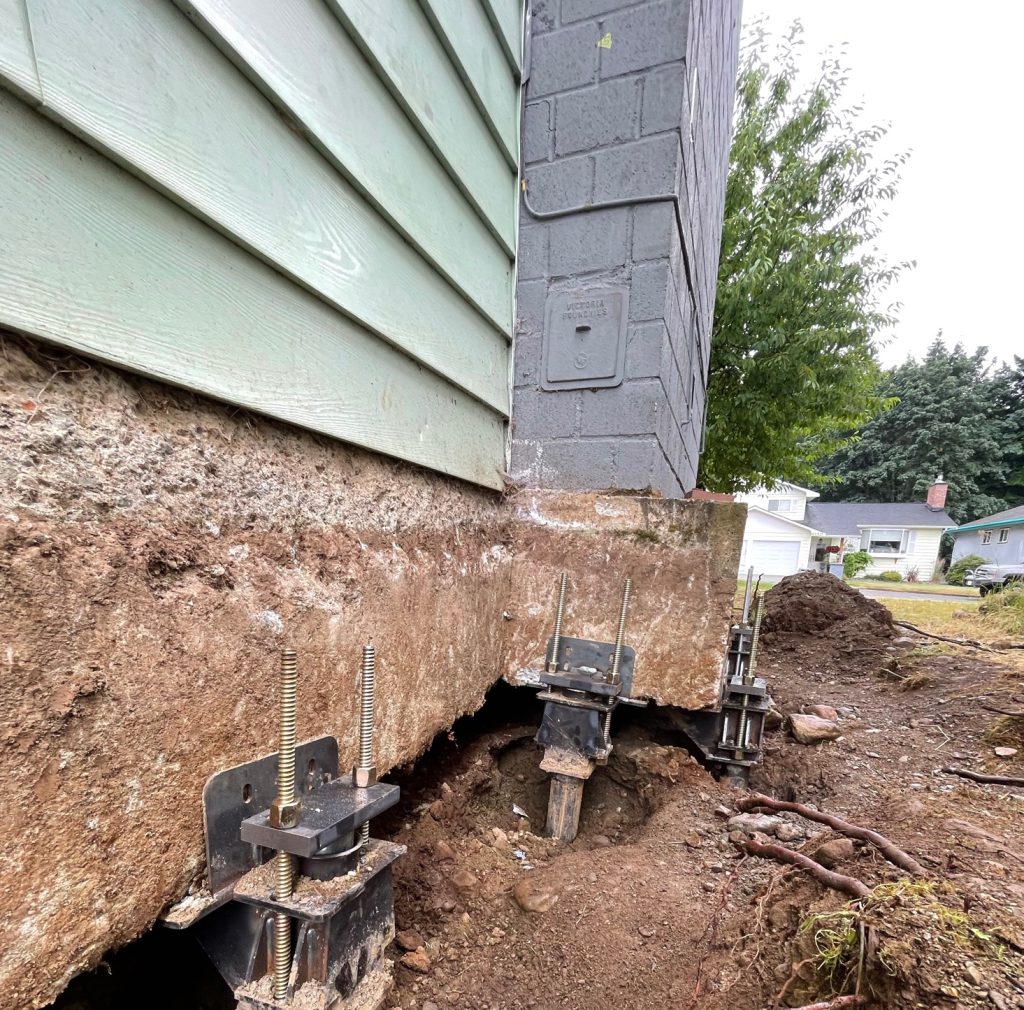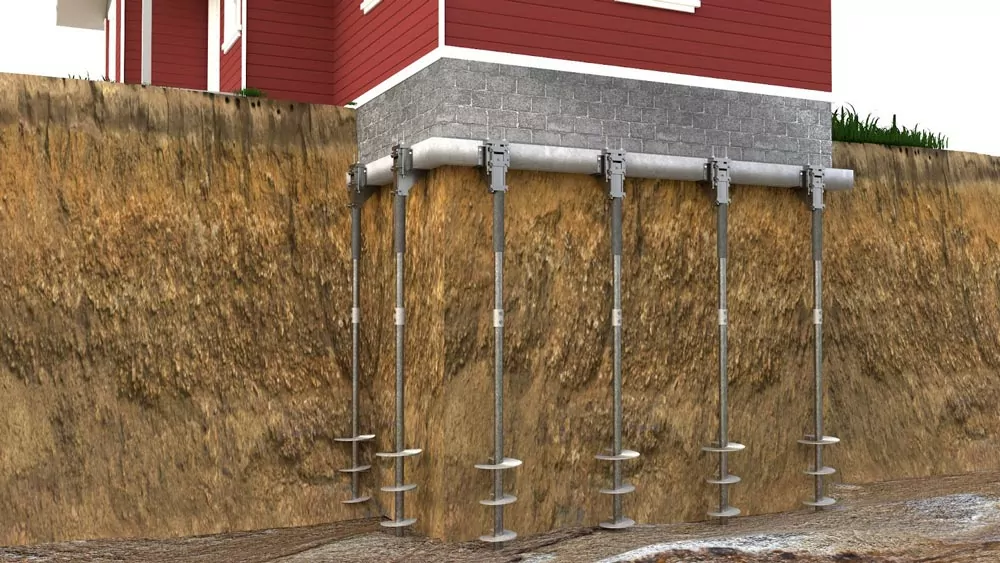Exploring Various Methods of Foundation Fixing for Numerous Soil Types
Structure repair work is a crucial element of preserving architectural stability, especially when taking into consideration the diverse difficulties postured by different dirt kinds. The intricacy of soil habits under varying conditions necessitates a customized method to repair, guaranteeing ideal options such as helical piers for unstable dirts or chemical grouts for natural layers. Nonetheless, the inquiry continues to be: just how do we establish the most efficient technique for every distinct situation? Understanding the interaction between soil features and repair work strategies is critical, yet there is even more to reveal in the quest for sustainable services. What variables genuinely determine the selection of approach?
Recognizing Dirt Kinds
Soil types play an important duty in the stability and longevity of building foundations, making it vital for homeowners and building specialists to comprehend their characteristics and actions. The interaction between dirt and structure can figure out the architectural stability of a structure. There are several dirt kinds, each with distinctive physical homes that influence exactly how structures are made and maintained.
Granular soils, such as sand and gravel, give great water drainage and are often thought about secure. In contrast, natural dirts like clays and silts show various behaviors.
Rocky soils, recognized for their toughness and stability, deal exceptional support for structures yet may need customized equipment for excavation. Alternatively, fertile soils, which are a balanced mixture of sand, silt, and clay, commonly give favorable problems for structure assistance due to their modest drain buildings.

Recognizing these dirt types is essential for picking suitable structure repair service techniques, guaranteeing the sturdiness and safety and security of structures in time.
Difficulties With Expansive Clay
Among the different soil types, large clay offers one-of-a-kind challenges for structure security due to its tendency to undertake significant quantity changes with moisture variation. This type of dirt swells when wet and contracts when completely dry, which can put in substantial pressure on structures. These changes can bring about foundation fracturing, heaving, and settlement concerns, positioning significant dangers to the architectural integrity of buildings.
The difficulties with extensive clay are worsened by its plasticity index, which measures the dirt's ability to alter shape and quantity. A high plasticity index indicates higher capacity for movement, boosting the possibility of damage to structures. This is specifically bothersome in areas experiencing extreme or regular weather condition changes, where cycles of wet and completely dry problems prevail.
Furthermore, the deepness of large clay layers can differ, making complex the evaluation and preparation of proper foundation repair work approaches. These complexities need a thorough geotechnical examination to guarantee reliable foundation repair approaches are executed, emphasizing the value of resolving extensive clay difficulties with experience and care.
Solutions for Sandy Soils
Sandy dirts, defined by their big particle size and low communication, existing distinctive challenges for structure stability because of their propensity for shifting and erosion. These buildings require specialized structure repair service methods to guarantee structural stability. One effective remedy is making use of deep foundation systems such as helical piers or driven heaps. By anchoring the foundation to deeper, extra steady dirt layers, these systems can offer the needed support to counteract the changing nature of sandy soils.
An additional recommended method is the application of soil stabilization methods. Chemical grouting, for circumstances, involves injecting a maintaining representative right into the dirt, which boosts communication and decreases permeability. This procedure aids to strengthen the sandy substratum, therefore reducing the risk of erosion and activity.
Additionally, installing correct drain systems is vital in sandy dirt conditions. Making certain sufficient water drainage can stop water build-up around the structure, which frequently aggravates disintegration and soil variation. Techniques such as French drains or surface grading can be used to guide water away from the building boundary.
Dealing With Clearing Up in Loamy Soils
Fertile dirts, understood for their well balanced mix of sand, silt, and clay, supply a productive base for numerous structures but can in some cases bring about structure settling as a result of their one-of-a-kind composition. This well balanced structure offers superb drain and nutrient retention, making it ideal for agriculture and landscape design. Nonetheless, this helpful hints very same quality can end up being troublesome for foundations, as shifts in dampness web content can trigger the dirt to broaden or contract, resulting in resolving.
Accurate dirt screening is essential to figure out the particular composition and dampness content of the loam. Once information is collected, applying proper drainage options is vital to maintain constant wetness degrees, consequently decreasing the risk of dirt contraction or growth.

Cutting-edge Fixing Techniques
In the realm of structure repair work, innovative techniques are constantly being established to deal with the complex challenges presented by various dirt conditions. As dirt kinds vary dramatically in their architectural homes, typical methods may not constantly are sufficient. The development link of brand-new innovations in foundation repair service offers much more customized options, making certain security and long life.
One notable technology is the usage of helical piers, which are especially reliable in unsteady or extensive dirts (foundation repair oklahoma city). These piers are screwed into the ground until they get to a stable layer of dirt, offering solid support for the foundation browse around this site over. This approach minimizes disruption and is adaptable to different soil kinds, making it a functional service
An additional cutting-edge technique is the application of polyurethane foam shot. This method involves injecting high-density polyurethane foam under the foundation to fill spaces and stabilize the framework. It is a much less intrusive option to conventional foundation, providing fast setup with very little disruption to the surrounding location.
Additionally, soil stablizing techniques, such as making use of chemical grouts, have obtained grip. These compounds enhance dirt toughness and reduce leaks in the structure, stopping future changing. Collectively, these innovative repair service strategies provide reliable solutions for the diverse difficulties presented by differing soil conditions.
Verdict

Foundation repair is an important facet of keeping architectural integrity, especially when considering the diverse difficulties positioned by various dirt kinds (foundation repair okc). The complexity of soil behavior under differing problems demands a tailored approach to repair, guaranteeing ideal options such as helical piers for unsteady dirts or chemical cements for cohesive layers. By anchoring the foundation to much deeper, extra secure dirt layers, these systems can give the necessary support to counteract the changing nature of sandy dirts
Foundation repair requires careful consideration of dirt kinds to make sure stability and longevity. Chemical grouts enhance dirt toughness and minimize permeability in cohesive dirts.